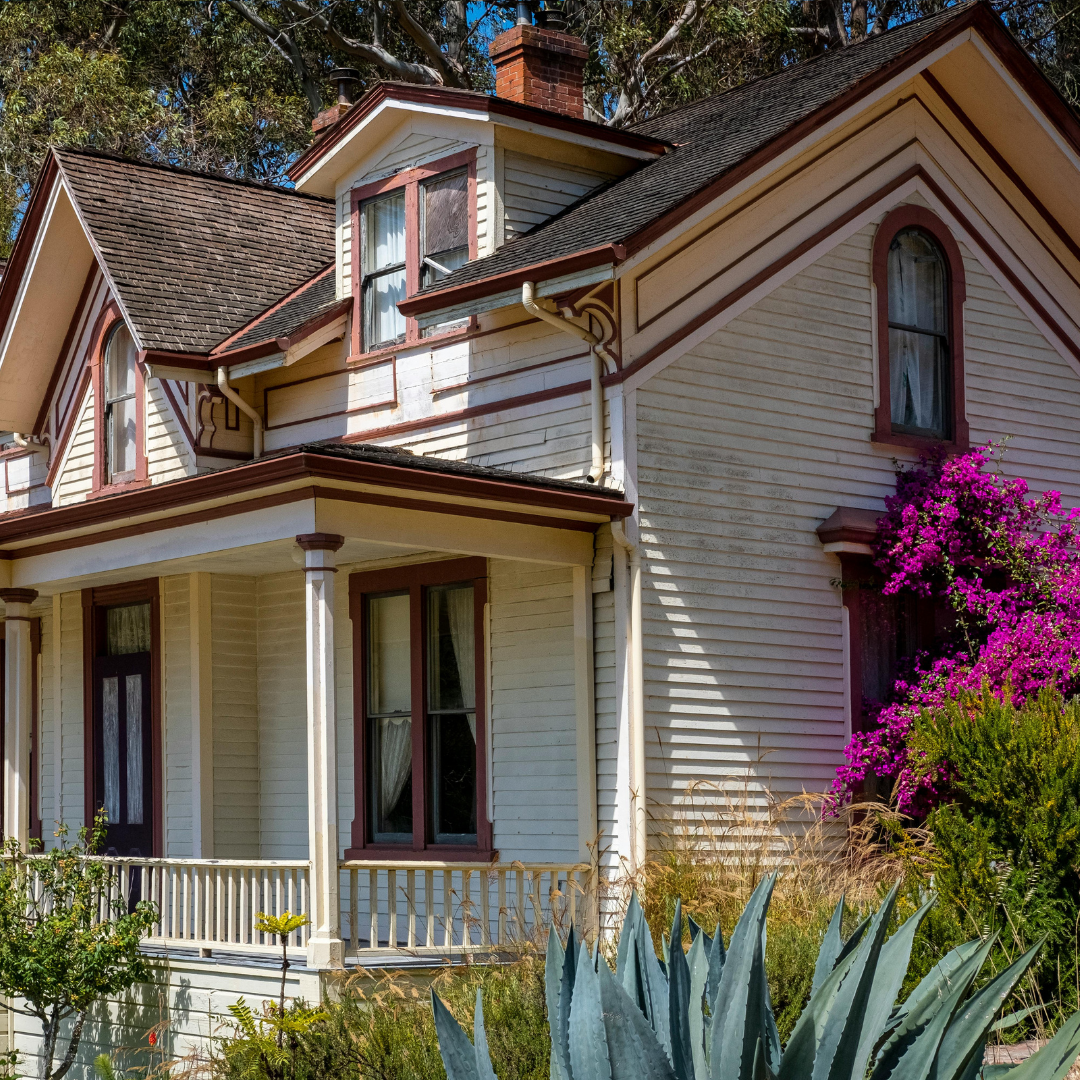Donec efficitur, ligula ut lacinia
viverra, lorem lacus.

Top Mistakes to Avoid When Restoring a Heritage Property: Essential Guidance for Successful Renovation
Restoring a heritage property can be a rewarding venture, but it comes with its own set of challenges. Property owners often underestimate the complexities involved, leading to mistakes that can compromise the restoration process. Familiarising oneself with common pitfalls can save time, money, and the integrity of the building.
One frequent mistake is neglecting to research the historical significance of the property. Understanding its architectural style and past renovations informs decisions that respect its original character. Additionally, failing to secure the necessary permissions and guidelines can result in costly setbacks, making proper planning essential.
Choosing the wrong materials or contractors can further jeopardise a restoration project. It’s crucial to select professionals experienced in heritage properties to ensure that repairs are carried out appropriately. Avoiding these missteps will not only enhance the restoration quality but also preserve the unique charm that heritage properties offer.
Crucial Planning and Regulatory Considerations
Attention to detail during the planning phase is crucial when restoring a heritage property. Key considerations include understanding conservation strategies, local regulations, and the importance of consulting with professionals experienced in heritage preservation.
Overlooking the Importance of Conservation Strategies
Conservation strategies provide a framework for maintaining the integrity of historic buildings. These strategies often include guidelines for preserving original materials and architectural features.
Failing to adhere to recommended practices can lead to irreversible damage. Property owners should engage in thorough research to understand the specific needs of their heritage site.
Additionally, incorporating modern techniques that complement traditional methods is essential. This approach aids in preserving both the aesthetic and structural integrity of the property while ensuring its longevity.
Misunderstanding Heritage Designations and Local Regulations
Heritage designations can significantly impact restoration planning. Each designation, whether local, national, or international, comes with a unique set of regulations that must be followed.
Ignoring these regulations can lead to costly penalties and might halt the project entirely. Property owners must verify the status of their building through relevant heritage bodies and consult local planning authorities.
Awareness of any restrictions on modifications, additions, or demolitions is vital. Engaging with these regulations helps streamline the restoration process and preserves the character of the heritage site.
Failing to Consult a Conservation Officer
Consulting a conservation officer is a critical step in the restoration process. These professionals offer guidance on best practices for maintaining heritage properties.
They can assist in navigating the complexities of conservation strategies and local regulations. Engaging with a conservation officer early can help identify potential challenges and solutions specific to the site.
Without their expertise, property owners might overlook factors essential for compliance and preservation. Regular communication with a conservation officer can enhance the likelihood of a successful and respectful restoration project.
Material Choices and Restoration Methods
Selecting appropriate materials and restoration methods is crucial for the integrity of heritage properties. The right choices not only enhance aesthetic appeal but also ensure longevity and compliance with preservation standards.
Selecting Inappropriate Building Materials
Using modern or synthetic building materials can compromise the historical authenticity of a heritage property. For instance, materials such as PVC, modern concrete, or mass-produced bricks may not blend with original features.
Instead, it is advisable to opt for traditional materials that match the historical context. Natural stone, timber, and lime mortar are often recommended.
These materials allow for breathability, which is essential for older structures to prevent moisture build-up. Regular assessments and sourcing from reputable suppliers can ensure that the selected materials maintain the property’s character.
Neglecting Quality Materials and Skilled Craftsmanship
Quality should not be overlooked during restoration projects. Using inferior materials can lead to future complications, such as structural integrity issues or accelerated deterioration.
Engaging skilled craftsmen is equally important. They possess the knowledge necessary for traditional building techniques and can ensure that restoration aligns with the original construction methods.
For example, skilled joiners and stonemasons can replicate intricate details that would be challenging to achieve with lower-quality alternatives. Investing in quality pays off in sustainability and reduces long-term maintenance costs.
Ignoring Preventive Conservation Methods
Preventive conservation is a proactive approach that should never be neglected. It involves understanding potential risks to the property and implementing measures to mitigate them before they escalate.
Measures could include regular monitoring of environmental conditions, such as humidity and temperature, which affect materials like wood and masonry.
Implementing appropriate drainage solutions around the property can prevent water ingress, thereby preserving outbuildings and other features. Timely repairs of small cracks and damages can also prevent larger issues from developing. For a more thorough assessment, enlisting the help of Professional drain surveyors, Express Drainage Solutions (or similar companies), can help identify hidden issues. Timely repairs of small cracks and damages can also prevent larger issues from developing.
Balancing Sustainability with Preservation Needs
Restoring heritage properties presents unique challenges in merging modern sustainable practices with preservation requirements. It is crucial to recognise key aspects to ensure future generations can appreciate these sites while also meeting current standards for sustainability.
Overlooking Sustainable Practices in Renovation
Many restoration projects neglect sustainable practices that can enhance energy efficiency and reduce environmental impact. Implementing insulation that harmonises with the property’s character is vital. Options like sheep’s wool or hemp insulation can be effective while maintaining the aesthetic integrity. On the other hand, modern insulation materials, while offering improved energy efficiency, can sometimes introduce complications when used in historically sensitive structures. For example, certain types of insulation, such as spray foam, can trap moisture or affect the building’s ability to breathe, potentially leading to complications down the line.
In such cases, reviewing resources like Spray Foam Insulation Mortgage Advice can provide helpful insight into how existing installations might affect both restoration plans and property valuation. Utilising non-toxic, eco-friendly materials in renovation contributes significantly to sustainability. For example, choosing reclaimed timber for structural repairs not only preserves the building’s authenticity but also minimises the depletion of natural resources. Focusing on these practices encourages a more environmentally conscious approach to heritage renovation.
Integrating Modern Features such as Solar Panels
The integration of modern features is essential for improving energy efficiency. Solar panels, when installed thoughtfully, can coexist with historical architecture. They should be placed in non-intrusive areas, ensuring that the visual integrity of the heritage site is not compromised.
Choosing solar panel designs that complement the property’s style is critical. Many manufacturers offer solutions that blend seamlessly with traditional roofs, allowing for a sustainable energy source without sacrificing the site’s character. This approach supports both current energy needs and the long-term preservation of heritage sites.
Disregarding Long-Term Sustainability for Future Generations
Focusing solely on short-term gains can undermine the preservation of heritage properties. A commitment to long-term sustainability is essential for ensuring these sites remain viable for future generations. This involves not just renovations but also ongoing maintenance practices that conserve resources.
Establishing conservation efforts that prioritise sustainability promotes a legacy of responsible stewardship. For instance, developing a management plan that incorporates sustainable practices ensures that heritage sites will not only survive but thrive. Continuous education on maintaining energy-efficient systems further supports the longevity of these valued properties.
Managing Risks and Protecting Heritage Value
Restoration of heritage properties involves various risks that can affect their long-term value and integrity. Effective management of these risks, along with an understanding of the financial benefits available, plays a key role in preserving cultural heritage. Also, careful risk management ensures that unexpected events don’t cause irreversible damage to heritage properties. For instance, safeguarding against threats like flooding, leaks, and mold growth can help preserve these structures over time. However, when emergencies like water damage threaten these sites, professional services such as Flood Emergency Services can provide expert emergency response and restoration to safeguard their historical value.
Underestimating Risk Management and Tax Incentives
Proper risk management is crucial in heritage restoration. Owners should conduct thorough assessments to identify potential issues, including structural weaknesses, environmental factors, and compliance with local regulations. For example, in areas prone to seismic activity, understanding the need for a retrofit los angeles (or elsewhere) can be a critical part of mitigating risks. By doing so, they can mitigate risks that may lead to costly repairs or loss of heritage value.
Tax incentives can significantly offset restoration costs. These incentives may include grants, credits, or exemptions available at local, regional, or national levels. Understanding the eligibility criteria and application processes can provide financial relief, making projects more feasible while also encouraging the preservation of unique properties.
Neglecting Light Sensitivity and UV Exposure
Heritage properties are often susceptible to damage from light exposure. Prolonged UV radiation can lead to fading of paint, deterioration of fabrics, and degradation of other materials. It is essential to assess the lux levels and choose appropriate light sources to limit the impact.
Implementing protective measures, such as UV-filtering films or specialised glazing, can reduce light damage. Owners should monitor light intensity closely and adjust lighting strategies based on the specific sensitivity of materials within the property. This careful management preserves the aesthetic and historical value of the space.
Failing to Engage Local Communities and Educational Programmes
Involving local communities is vital for the successful restoration of heritage properties. Community engagement fosters a sense of ownership and pride, ensuring support for preservation efforts. Residents often have valuable insights about the property’s history and significance.
Educational programmes can further enhance awareness about the importance of heritage conservation. Workshops, guided tours, and informational sessions help educate the public on cultural heritage and its ongoing value. Collaborating with local schools and organisations can expand outreach and build a lasting appreciation for heritage properties.



